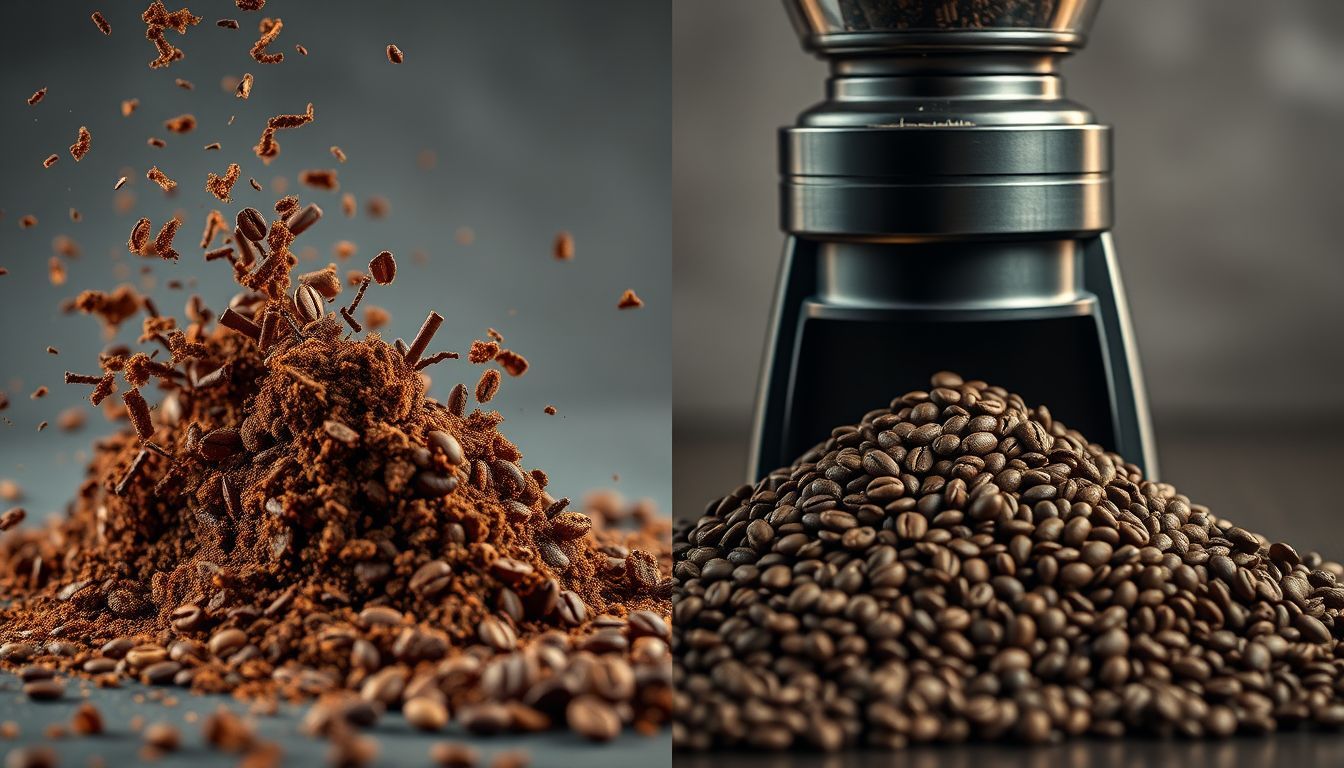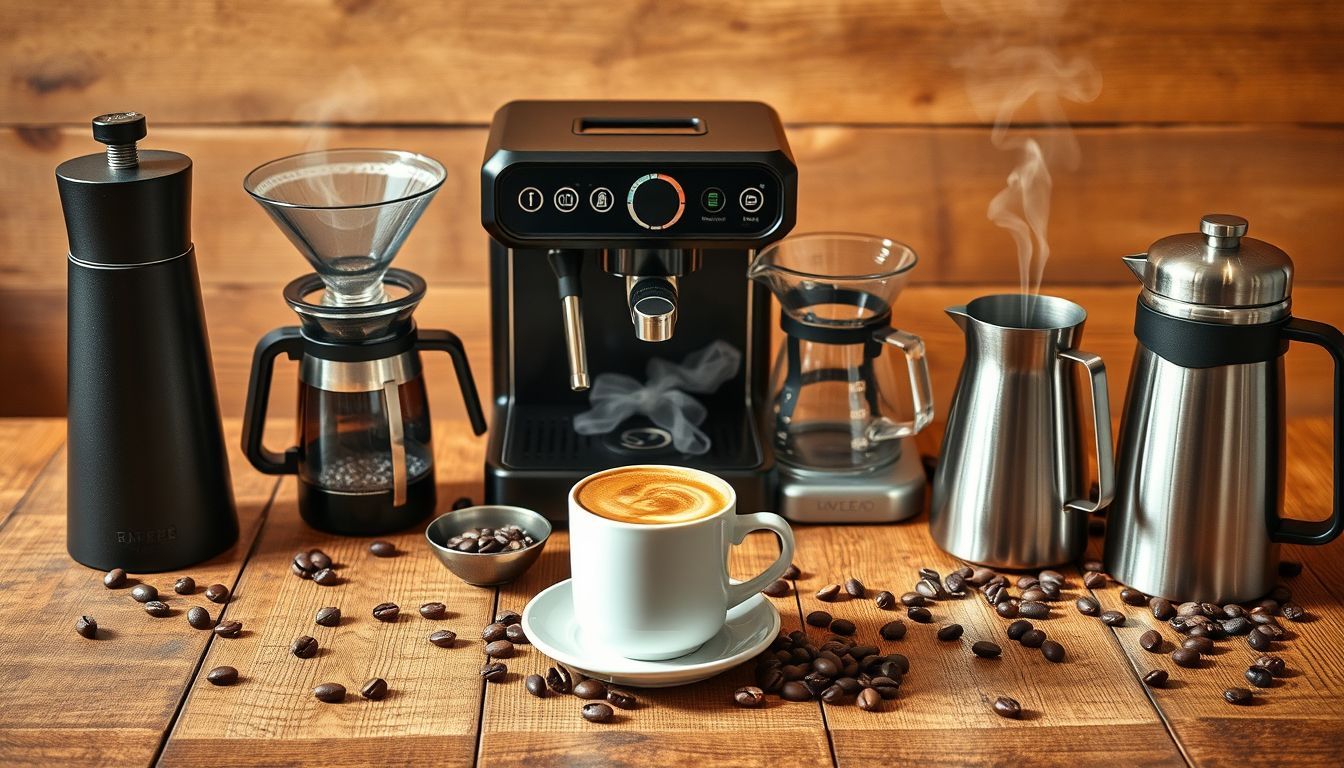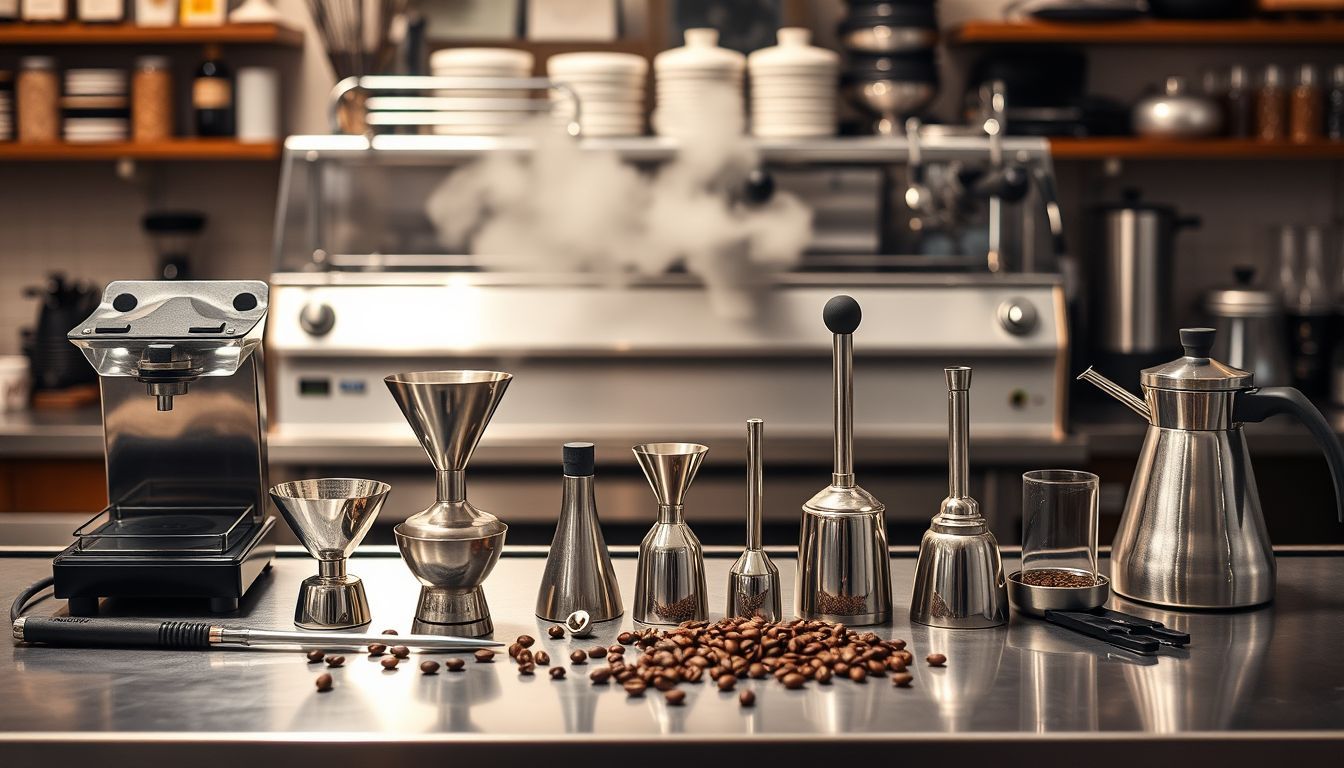Why Burr Grinders Are Worth Every Penny (And How They'll Transform Your Coffee)
Discover why burr grinders are the most important coffee equipment upgrade. From particle consistency to flavor extraction, learn how proper grinding transforms mediocre beans into exceptional coffee.

Amazon Affiliate Disclosure
This post contains affiliate links. If you purchase through these links, we may earn a small commission at no additional cost to you.
Why Burr Grinders Are Worth Every Penny (And How They'll Transform Your Coffee)
Last month, I conducted an experiment that would make any coffee purist weep. I took the same bag of exceptional Ethiopian beans—a $25 single-origin with notes of blueberry and chocolate—and brewed it using two different grinders. The first cup, ground with a $20 blade grinder, tasted like bitter disappointment with hints of regret. The second cup, ground with a Baratza Encore Coffee Grinder, sang with the complexity that made those beans expensive in the first place.
Same beans. Same brewing method. Same water. Same technique. The only variable was the grinder, yet the difference was so dramatic that a casual observer might have assumed I'd switched to entirely different coffee.
This experiment illustrates something I've been preaching for years: your grinder is the most important piece of coffee equipment you'll ever buy. More important than your brewing device, more important than your scale, more important than that Instagram-worthy kettle. A great grinder can make mediocre beans taste good and exceptional beans taste transcendent. A bad grinder can make the world's finest coffee taste like caffeinated sadness.
Today, we're diving deep into why burr grinders represent the single best investment in your coffee setup, how they actually work, and why the price difference between blade and burr grinders is the best money you'll ever spend on coffee.
The Science of Coffee Grinding: Why Particle Size Rules Everything
Before we explore burr grinder superiority, let's understand why grinding matters so fundamentally to coffee extraction.
Extraction: The Heart of Coffee Brewing
Coffee brewing is essentially controlled extraction—dissolving the desirable compounds from coffee beans while leaving behind the undesirable ones. This process depends entirely on surface area: more surface area means faster extraction, less surface area means slower extraction.
The Goldilocks Zone: Perfect coffee requires extracting 18–22% of the coffee's mass. Under-extract (below 18%) and you get sour, weak coffee. Over-extract (above 22%) and you get bitter, harsh coffee. The grind size controls how quickly you reach this optimal extraction range.
Particle Size Distribution: The Hidden Variable
Here's where most people's understanding breaks down. It's not just about average particle size—it's about particle size consistency. When your grinder produces particles ranging from powder to pebbles, some coffee over-extracts while other coffee under-extracts, creating a muddled mess of competing flavors.
The Blade Grinder Problem: Blade grinders create what scientists call a "bimodal distribution"—lots of very fine particles and lots of very coarse particles, with fewer particles in the optimal middle range. This creates simultaneous over-extraction and under-extraction in the same cup.
The Burr Grinder Solution: Quality burr grinders enforce a "unimodal distribution"—most particles clustered around your target size with minimal outliers. This enables even extraction and clean, clear flavors.
Burr Grinders vs. Blade Grinders: The Technical Breakdown
How Blade Grinders Work (And Why They Don't)
Blade grinders use a spinning blade to chop coffee beans, similar to a food processor. The longer you grind, the finer the particles become—in theory.
The Reality:
- Particles closest to the blade get pulverized into powder
- Particles farther from the blade remain relatively large
- Heat from friction damages coffee oils and aromatics
- No control over particle size distribution
- Results vary based on bean density, moisture content, and roast level
Visual Analogy: Imagine trying to create uniform wood chips using a chainsaw. You might eventually get some pieces the right size, but you'll also have sawdust and chunks mixed in.
How Burr Grinders Work (And Why They Excel)
Burr grinders use two abrasive surfaces (burrs) to crush coffee beans between them. The distance between the burrs determines particle size, while the burr design controls particle shape and distribution.
The Mechanism:
- Beans are fed between two burrs
- One burr remains stationary while the other rotates
- Beans are progressively crushed as they move through the burr set
- Particles can only exit when they're small enough to fit through the gap
- Consistent particle size is mechanically enforced
Types of Burrs:
Flat Burrs: Two parallel discs with cutting surfaces. Produce very uniform particles with slightly more fines. Preferred for espresso and precision brewing.
Conical Burrs: Cone-shaped burr fits inside a ring burr. Produce slightly less uniform particles but with better flavor clarity. Often preferred for filter coffee.
The Flavor Impact: Why Consistency Transforms Coffee
When all coffee particles are roughly the same size, they extract at roughly the same rate. This creates:
- Balanced Flavor: No single taste component dominates
- Clarity: Individual flavor notes become distinguishable
- Sweetness: Proper extraction reveals natural coffee sugars
- Reduced Bitterness: Eliminates over-extraction from fines
- Reduced Sourness: Eliminates under-extraction from coarse particles
Real-World Testing Results
I've conducted extensive side-by-side testing using the same coffee with different grinders:
Blade Grinder Results:
- Muddy, indistinct flavors
- Prominent bitterness from over-extracted fines
- Underlying sourness from under-extracted chunks
- Gritty mouthfeel from inconsistent particles
- Difficulty achieving proper extraction regardless of brewing method
Burr Grinder Results:
- Clear, distinct flavor notes
- Balanced sweetness and acidity
- Clean mouthfeel
- Consistent results across multiple brews
- Easy to dial in optimal extraction
The Compound Effect
The flavor improvements from burr grinders compound over time. As you develop your palate and brewing skills, the grinder's consistency allows you to:
- Taste subtle differences between coffee origins
- Appreciate the impact of processing methods
- Fine-tune brewing parameters for specific results
- Experiment with advanced brewing techniques
Economic Analysis: The True Cost of Grinding
Initial Investment Comparison
Blade Grinders: $15–$50
Entry-Level Burr Grinders: $100–$200
Mid-Range Burr Grinders: $200–$500
High-End Burr Grinders: $500–$2,000+
Cost Per Cup Analysis
Over a 5-year period for someone drinking 2 cups daily:
Blade Grinder Scenario:
- Initial cost: $30
- Replacement every 2 years: $60 total
- Wasted coffee due to poor extraction: ~20% of beans
- Total coffee cost (assuming $12/lb, 2 cups daily): $2,190
- Total 5-year cost: $2,250
Burr Grinder Scenario:
- Initial cost: $200
- No replacement needed: $200 total
- Optimal coffee utilization: ~0% waste
- Total coffee cost: $1,825
- Total 5-year cost: $2,025
Net savings with burr grinder: $225 over 5 years (plus far better coffee quality).
Burr Grinder Categories and Recommendations
Entry-Level Burr Grinders ($100–$200)
We recommend starting with an Baratza Encore. This conical burr grinder offers 40 grind settings, solid build quality, and repairable components—ideal for drip coffee, French press, and the home barista.
For those on a budget, the Mr. Coffee Automatic Burr Mill provides better consistency than blade grinders and is easy to find.
Mid-Range Excellence ($200–$500)
- Step up to precision dosing and quieter motors. If you’re focusing on filter coffee, consider the COSORI Pour Over Coffee Maker. Though not a grinder, it pairs excellently with a quality burr grinder for pour-over clarity and flavor separation.
High-End Performance ($500+)
- For serious espresso enthusiasts, high-end grinders justify the price. You’ll find commercial-grade uniformity and build quality that outlasts most home appliances.
Matching Grinders to Brewing Methods
Espresso Requirements
Espresso demands the highest grind consistency and finest adjustment capability:
- Minimum: Stepless or very fine stepped adjustment
- Burr type: Flat burrs generally preferred
- Recommended: Mid- to high-end machines in the $400+ range
Filter Coffee Optimization
Pour-over and drip coffee benefit from clarity and flavor separation:
- Adjustment range: Medium-coarse to medium-fine
- Burr type: Conical or flat burrs both work well
- Recommended: Entry-level to mid-range burr grinder plus a Hario V60 Drip Scale for precision brewing.
French Press and Cold Brew
Immersion methods are more forgiving but still benefit from consistency:
- Grind size: Coarse, uniform particles
- Recommended: Any quality burr grinder with coarse settings and good uniformity.
Maintenance and Longevity
Quality burr grinders are designed for long-term use with serviceable components:
- Steel burrs: 500–1,000 pounds of coffee
- Ceramic burrs: 750–1,500 pounds of coffee
- Home use: 5–10 years before replacement needed
Pro Tip: Brush out your grinder daily, and deep-clean monthly to prevent buildup and preserve flavor.
Conclusion: The Foundation of Great Coffee
After years of testing equipment and analyzing coffee quality, I can state unequivocally that a quality burr grinder is the single most important investment in any coffee setup. It's the foundation upon which all other improvements build.
If you find yourself grinding more than a minimal dose and you still struggle with inconsistent results, it’s time to upgrade. Embrace the difference for yourself—your taste buds and your favorite beans will thank you.
What's your experience with the transition from blade to burr grinding? Have you tried a Baratza Encore or a Mr. Coffee Automatic Burr Mill? Share your “aha” moments!

Sofia Rossi
I started my career in a world of spreadsheets and boardrooms, but I quickly realized the most interesting data was in the way people interacted when the pressure was on. My novels are my way of analyzing the human heart—the messy, complicated, and often hilarious parts. I write about the lives we lead now, with all the love, ambition, and absurdity that comes with it.


